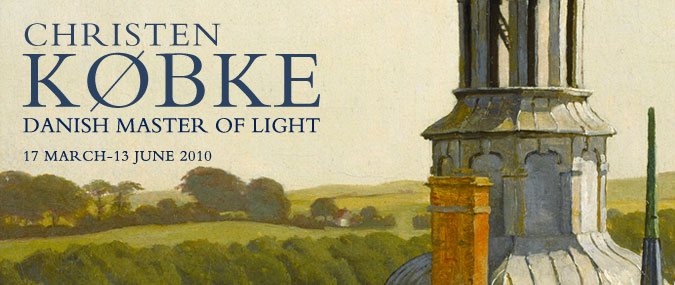This is the first exhibition outside Denmark to focus on the paintings of Christen Købke (1810–1848). Emphasising his exquisite originality and experimental outlook, the exhibition focuses on the most innovative aspects of his work – including outdoor sketching, his fascination with painterly immediacy, and treatment of light and atmosphere.
The exhibition features around 40 of Købke’s most celebrated works, spanning a variety of genres. Works include landscapes, portraits of many of his family and closest friends, and depictions of Danish national monuments using his charming and unusual sense of perspective.
Exhibition film
Transcript
Presenter: Christen Købke lived most of his life in Copenhagen in Denmark. He was born and raised there, studied and worked there, and died there in 1848 at the early age of 37. His scenes of life in the various parts of the city – the buildings, streets and some of the faces – have now become synonymous with the ideals of the Danish Golden Age in the first half of the 19th century.
A scene such as the ‘Morning View of Østerbro’, painted in 1836 near to where the artist was living at the time, suggests a stable and harmonious society. Different individuals make their way along the street and about their business, or stop for a conversation, and are held captive in time by the luminous radiance of the light and the fine attention to detail. Pastoral details such as the cows heading to the meadows blend with the more finely dressed folk in their carriage. All seem to have a sense of purpose and a place; all are paused for a moment, painted in the delicate nuances of colour and light characteristic of Købke’s work.
Although Denmark had had a long and prosperous history and an extensive kingdom, much of this was lost as a result of a decision to join forces with Napoleon in the early 19th century. Defeated and crushed by the British bombardment, the country was eventually left bankrupt and much reduced, still under an autocratic ruler, Frederick VI. Despite these social and political upheavals, the period saw a great renewal in the arts – the writer Hans Christian Andersen and the philosopher and theologian Søren Kierkegaard were contemporary with Købke, and Copenhagen was their thriving and flourishing milieu. Works such as this one are now seen to represent this Golden Age, with Købke its prime pictorial exponent. The mild-mannered Købke would no doubt have been astonished to think so – by all accounts he was modest and unassuming and although his work was appreciated in his native city, he did not receive this kind of accolade during his lifetime.
Christen Købke was part of a large family – his father was a master baker and financially successful. Young Købke was enrolled at the art school – the Royal Danish Academy in Charlottenborg – by the age of 11, to learn his profession and study the Masters, both ancient and modern. Here he received a strict training, following the traditions of the Italian Renaissance and other European art academies, concentrating on refining his draughtsman’s skills.
Students were taught to draw from other artists’ drawings, or to make studies of objects before eventually moving on to copy from classical casts. This method of learning relied heavily on classical sculpture as inspiration and Købke spent years copying drawings or parts of antique statues before finally being allowed to work on the figures themselves. Certainly one of the hallmarks of his work is his fine draughtsmanship – clearly a skill honed from the beginning of his artistic career.
Find out more about the Christen Købke exhibition at the National Gallery
About the artist
Købke was a pre-eminent painter in his country and arguably one of the greatest talents of Denmark’s Golden Age. With the exception of one journey to Italy, he spent almost his entire life in and around the Citadel in Copenhagen, where he found the principal themes of his art.
Købke’s work demonstrates his ability to endow ordinary people and places and simple motifs with a universal significance, creating a world in microcosm for the viewer.
The exhibition is organised with the National Galleries of Scotland, Edinburgh, where it will follow from 4 July–3 October 2010.
Supported by The A.P. Møller and Chastine Mc-Kinney Møller Foundation, Copenhagen

